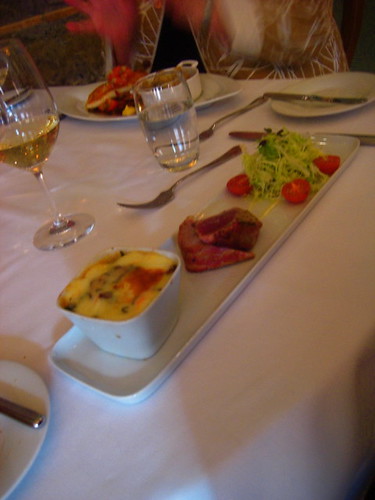Written a few days ago.
I’m still at the Reaching and Teaching Conference and Calgary. It has offered an interesting and broad range of ideas, from Larry Lezotte on Thursday, through Ian Jukes yesterday, my thing this morning, and now sitting in Will Richardson’s Web 2.0 presentation. But just a minute ago, something congealed in my head, related to a bit of tension that’s been with me since Lezotte’s address. Richardson just pulled up his clustr map for his blog, Weblogg-ed — adding that, “The number of dots is not the point.” With Will’s map, it would be easy the assume that quantity is its value.
But then he said, “This is my classroom.”
It is a thread that runs throughout his presentation, that he learns from his network. The main thrust of Lezotte’s presentation was that you can’t prepare children for their future in 20th century, factory-designed, brick and mortar schools. He even talked a bit about school design, and his work with architects, and the constraints that they continue to feel from school boards who are too uncomfortable straying too far from the factory norm.
I’ve written about this before, that we’ve conditioned ourselves to believe that you need containers to teach and learn. It happens within the fixed walls of the classroom, between the covers of our pre-packaged textbooks, and the inflexible confines of the daily schedule. We even measure learning, to a certain degree, by the amount of time students are contained in their seats.
Yet, the only thing containereque about Will’s map is its visualization. His teachers connect with him regardless of geography, regardless time, regardless of where they happen to be sitting (home, school, office, coffeeship, cybercafe, etc.).
There is no starting and stopping point.
Well that may not be entirely true. The starting point is the inception of an idea, its growth, and shaping through the forge of conversation. The ending point is when it is fully formed and fitted into the engine of another larger idea or concept.
I’m wondering if its possible that the shape of the classroom or even the schedule of the day may not even matter that much, that our task may be to figure out how to morph learning activities so that they flow (or overflow) out into the flexible space of our networks.
Many would say that I’m talking about Project Based Learning (PBL), and in a way I am. ..and that may be the extent of what I’m thinking about. But sometimes I wonder if we’ve defined and structured PBL to the point that it, also, might become a container. I don’t know. The only thing that I am certain of is that we haven’t come close to exhausting the possibilities of our networks as learning environments, and the continually emerging tools for working those networks.
Contained learners and learning is about control, and formal education that is entirely about control is the antithesis to the knowledge and learning skills our children will need in their future.
Three points to my bottom line:
- Know that you are a learner — it’s at the heart of being a teacher.
- Cultivate your own networked classroom and acknowledge that it is perpetually beta.
- Talk about your network with your students and provoke them to talk about theirs.
I think that if we can do these things, then a less containered learning environment may start to emerge.



David, you make an excellent point. I support instructional technology in a fast-growth district where we are still constructing new facilities annually. Perhaps we can innovate from your direction.
The most recent graphical representation I’ve seen that speaks well to your picture of anywhere, anytime continuous learning in an Education 3.0 environment is this chart from John Moravec:
http://www.educationfutures.com/2008/02/15/moving-beyond-education-20/